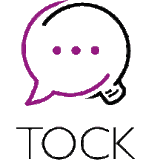Tock is an open‑source conversational platform designed to build agents (chatbots, voice‑bots, assistants) that can converse via text or voice. The main goal is to enable organisations, companies, public administrations, and services to offer automated interactions with users or customers while retaining full control over their data and logic. Tock targets those who want to avoid the constraints of third‑party APIs and have a mastered and flexible open‑source solution. In this review I analyse Tock’s features, the problems it solves, possible use‑cases, its installation, and its pros and cons.
Problems solved
Which problems does Tock solve?
Many proprietary platforms impose high subscription fees or complex pricing models, making long‑term adoption expensive.
Some solutions require the use of external APIs, raising issues of data sovereignty, vendor lock‑in, and confidentiality.
In many contexts, companies, public administrations, sensitive sectors, it is essential to control bot behaviour, responses, logs, and to be able to host data on‑premise.
Tock provides an open‑source service alternative that lets you keep complete mastery of models, data, interaction channels, and hosting, thus meeting the needs for sovereignty, independence, transparency, and long‑term cost reduction.
Key features and capabilities
Here are the main capabilities of Tock:
Natural Language Understanding (NLU) : Tock bundles a full NLU platform, built on free technologies such as OpenNLP, Stanford CoreNLP, Duckling, and potentially newer tools (Rasa, BERT‑based models, etc.).
- Multi‑channel and multilingual : Bots can be deployed on web, mobile, social networks, messengers, voice assistants, even “connected objects” or voice/text channels, offering very broad flexibility.
Developer frameworks and APIs : Tock offers DSLs (domain‑specific languages) or REST APIs, with examples in Kotlin, Python, Node.js, making integration with existing systems or enterprise architectures easy.
Flexible deployment : Cloud, on‑premise, Docker containers, embedded hosting, you choose according to your infrastructure constraints.
Management interface (Tock Studio) : A graphical UI lets you build “scenarios”, manage NLU models, configure channels, analyse conversations (analytics), work in multilingual mode, etc., making the tool usable even without writing code each time.
Support for generative AI / RAG (retrieval‑augmented generation) : Tock can incorporate external or internal LLMs, allowing a mix of deterministic dialogues (trees, rules, intents) and generative responses for richer interaction while keeping control.
How to install and configure
Typical steps to deploy Tock:
Download the source code or the official Docker image from the project repository (e.g., GitHub).
Start the server components (Bot API, NLU, database, typically MongoDB or DocumentDB); Tock runs on the JVM, with Kotlin as the reference language, but the REST API enables interoperability with other languages.
Access the Tock Studio UI to configure “stories”/dialogs, define intents, entities, rules, and input/output channels (web, messenger, voice, etc.).
Customize settings to your needs: pick NLU libraries, choose hosting (cloud or on‑premise), languages, channels, external integrations if required (databases, backend services, business APIs).
Test the bot (in sandbox or staging), fine‑tune NLP and rules, then push to production.
Concrete use‑cases
Tock can be applied in many professional contexts:
Automated customer service – answering frequent inquiries, support, user guidance, appointment booking, account information.
Internal corporate portal and IT support – automating responses for employees, onboarding, help‑desk or HR.
Public services or administrations – interactions with citizens, information requests, form handling, with strict data control.
Conversational e‑commerce – recommendations, assisted navigation, cart management, order processing.
Multilingual or multichannel contexts – bots reachable from several devices.
Sensitive‑sector scenarios – banking, healthcare, energy, requiring confidentiality, traceability, compliance, and strong technical support.
Comparison with alternatives
Below is a comparative table between Tock and two representative alternatives (a commercial cloud‑first solution and another popular open‑source project).
| Criteria / Feature | Tock | Rasa | Botpress |
|---|---|---|---|
| Open source / code freedom | ✅ | ✅ | ✅ |
| Data control (self‑hosting possible) | ✅ | ✅ | ✅ |
| Multi‑channel (web, mobile, messenger, voice) | ✅ | ✅ (depending on integrations) | ✅ |
| Framework / API for developers | ✅ | ✅ | ✅ |
| NLU / natural language understanding | ✅ | ✅ (strong) | ✅ |
| Visual builder / UI | “Studio” configuration UI | Mostly config + code | ✅ (flow builder) |
| Flexibility & modularity | ✅ | ✅ | ✅ |
Advantages and disadvantages
| Advantages | Disadvantages |
|---|---|
| ✅ Completely free and open‑source platform | ❌ Potential learning curve for configuring and maintaining the infrastructure |
| ✅ Highly customizable, flexible, and controllable | ❌ Less “out‑of‑the‑box” than SaaS solutions: configuration, hosting, maintenance required |
| ✅ Independence from third‑party APIs, data sovereignty | ❌ Fewer turnkey support options, depends on internal expertise |
| ✅ Capable of handling complex, multi‑channel, multilingual use‑cases | ❌ Requires skills (dev, ops, NLU) to get the most out of it |
Why use Tock: when it pays off
Tock is especially suitable for organisations that:
Have strong data‑control, privacy, or compliance requirements, administrations, healthcare, banking, energy.
- Want a sustainable solution without recurring fees tied to a proprietary platform.
Possess technical resources (developers, DevOps, data engineers) able to manage installation, configuration, and upkeep.
Need deep customisation, multi‑channel, multilingual, backend integration, complex business logic, generative AI, etc.
Want to avoid dependence on cloud giants or large tech firms while retaining the flexibility and power of a modern tool.
Conclusion
Tock offers an excellent compromise for companies and organisations looking to build robust, flexible, and sovereign conversational agents. Its open‑source nature, rich feature set, multi‑channel compatibility, and easy integration into diverse technical environments make it highly relevant for serious, large‑scale projects. If you have the necessary internal expertise, Tock is definitely worth exploring and deploying.


